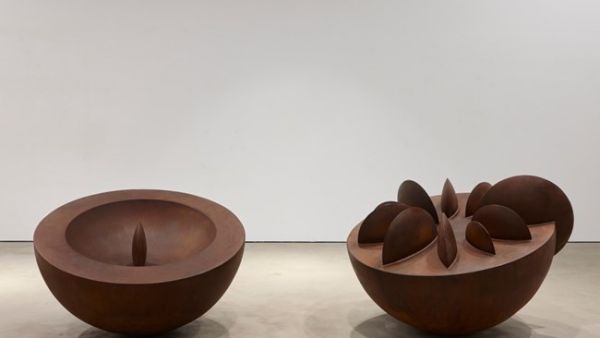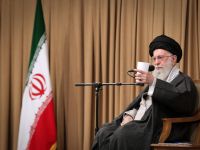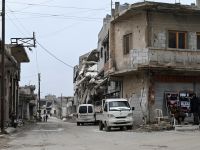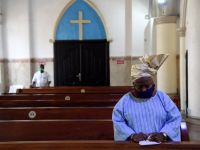Lebanese sculptor Anachar Basbous’ latest exhibition blends abstract and natural forms.
Spheres are split and reconfigured as though rising together from the ground. Steel bars are arranged in grand rings and allowed to rust.
Up at Saleh Barakat Gallery, the show is comprised of 16 sculptures in various media basalt, concrete, steel and aluminum.
In each, geometric fragments are attached to form a whole, some rising straight like towers, others looping back to ground.
It’s a style that has long defined Basbous’ work.
“There is a continuity,” he tells The Daily Star. “If you see the older expositions, and you see the current, they’re in the same mode but have gone just a bit further.”
Basbous was born in 1969 in Lebanon to a family of artists. After studying architectural wall design at Paris’ Ecole Nationale Superieure des Arts et des Metiers d’Art, he returned to Lebanon in 1992 and opened a sculpture workshop in Rachana. His father Michel founded this artist village and named his son after it, spelt backwards.
In 2008, Basbous was commissioned to build a commemorative sculpture at the site of the assassination of former Prime Minister Rafik Hariri.
Basbous says his architectural training continues to shape his work.
“I like building more than sculpting,” he remarks. “I like adding more than subtracting. You can feel that in my sculptures.”
The compulsion to build, he suggests, affects both individual works and the dialogue among them in the exhibition. “There are pieces that converse, one to another, to form a whole,” the artist says.
The exhibition “is a mosaic that speaks in space.”
In “Silver Flames,” aluminum curves are stacked, backs-touching, to curl toward opposite ends.
“It’s like they’re attached magnetically, [yet] they are pulled in opposite directions,” Basbous says.
“I’m always working on this duality of counterbalancing. This is the fruit of many years of research on circles and spheres,” he adds.
“In almost all the pieces, we have this cup, this curve, this geometric form, which goes beyond its geometric state and goes toward an architecture or even an organic form.”
Some sculptures make heavy use of rough, granular textures.
“I’m attracted to texture because through it we understand the depths of matter, its interior,” Basbous says.
“The interior is reflected by porousness, all the texture that you see in basalt and concrete.”
One piece, “Atomic Love,” features two hemispheres of rusted corten steel, with plates embedded in them. Here too, Basbous says, we see how one might “cut a sphere in two to discover what’s inside like fission, like a small infinity and a great infinity, like an atom and the globe.
“When I allow rust to build up, it creates [the material’s] skin ... a skin that comes from its interior. I try to play with these elements to reveal the material in the best way.”
A new series of works, Basbous says, is not far away.
“After any exhibition, it’s never, ‘Wow, let’s go relax a bit.’
“You see openings. You see doors. You see windows, tunnels.
“You want to attack them anew and discover where they’ll take you.”
“Anachar Basbous” is up at Saleh Barakat Gallery through Dec. 29.
This article has been adapted from its original source.








